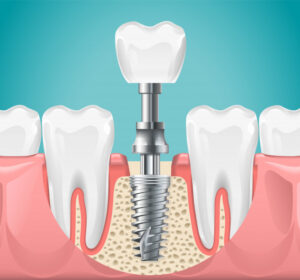A Nance Appliance is a dental appliance used for anchorage reinforcement treatments. Orthodontics use a nance appliance to expand or rotate the upper molars so that they remain at the appropriate place. It works as a space maintainer and mostly prevents upper molars from drifting forward. If your orthodontics has prescribed a nance appliance for your child, there are several must-know things that you should check out before actually undergoing surgery.
Here in this article, we are going to clear all the confusion you might have about the appliance. Check out now!
How does a Nance Appliance Work?
A Nance Holding Appliance comprises an archwire, one acrylic button, and two molar bands. The appliance comfortably sits around the roof of our mouth through the bands whose endpoints are placed on the upper arch of the two back molars. A wire connects both the bands, and the acrylic button is right at the center of the wire.
NHA is mainly used among children to fix specific orthodontic problems. For example, when a child’s baby teeth fall out at an early stage, the first molars are more likely to move forward along the free space. Orthodontics use NHA to hold the molar back so that other teeth can have enough space to come through. There are two possible ways to use an NHA. Your orthodontist will suggest to you an NHA that can either be permanently cemented, or it can also be removable.
While the removable option is what most people find easier to use, the cemented NHA does have a much better effect. If your molar has shifted slightly, then your dentist may suggest a removable appliance. But if in case the molars have more drastic movement, a cemented Nance will work better.
How to maintain your Oral Health While Using an NHA?
Routine brushing is essential while wearing an NHA. Since the device is mainly used among the children and they won’t be able to check it on their own, parents need to take good care of it. You need to ensure that your child brushes the roof of the mouth well while wearing an NHA.
Often or not, while having food, it can get stuck on the wire or the other parts of the appliance. That’s why it’s extremely important to rinse your mouth properly each time you have food. Also, while wearing an NHA, it’s better to avoid sticky or chewy candies that easily get stuck on the teeth.
If you are wearing a removable appliance, then take it out of your mouth and brush it with toothpaste to remove any additional debris or trapped food inside. A nance appliance must not cause any toothache only if you maintain good hygiene throughout its lifecycle. One might experience tenderness, inflammation, or a swallowed gum if there is left out food. On such occasions, rinse your mouth with salt in warm water at least thrice a day. Also, don’t forget to contact your orthodontist if there is constant irritation or pain.
What are the Limitations?
The first thing that you might have to face is a temporary lisp. However, the lisp will fade after a few days’ usages. Also, since the appliance is placed right to the roof of your mouth, the soft tissues on that region may cause irritation.
As far as lifestyle limitations are concerned, you must avoid all sorts of Carbonated beverages while wearing the Nance. Not only that but also avoiding sticky or crunchy or hard food is advisable. While consuming the food items mentioned, the band on your Nance appliance might come out. Also, the cement seal might get disrupted because of mal handling.
Also, when an appliance like Nance is implanted in a child’s mouth, they quickly develop the habit of playing with it with their tongue. Though it’s pretty hard to prevent children from playing with the device in their mouth, it’s advisable to try and do so. Otherwise, it may cause more friction and eventually lead to sores.
Conclusion
A Nance Holding Arch ensures that no undesired tooth movement is there in your child’s mouth. It can take a minimum of six months to more than a year in case of a full space closure. Pay regular visits to your orthodontist, and your dentist might be able to help you if the treatment is somewhat slow in your case.
Sources:
- Al-Awadhi, E. A., Garvey, T. M., Alhag, M., Claffey, N. M., & O’Connell, B. (2015). “Efficacy of the Nance appliance as an anchorage-reinforcement method”.
https://www.sciencedirect.com/science/article/pii/S0889540614010063 - Mun, C. H., & Lee, D. G. (2007). “Impacted tooth treatment with modified Nance appliance”.
https://www.koreascience.or.kr/article/JAKO200764064754506.page - Almuzian, M., Alharbi, F., Chung, L. L. K., & McIntyre, G. (2015). “Transpalatal, nance and lingual arch appliances: clinical tips and applications”.
https://www.magonlinelibrary.com/doi/abs/10.12968/ortu.2015.8.3.92 - Park, S., Choi, N., & Kim, S. (2020). “Orthodontic Traction of Impacted Teeth with Modified Nance Appliance”.
https://www.koreascience.or.kr/article/JAKO202033564390508.page



